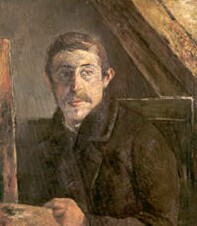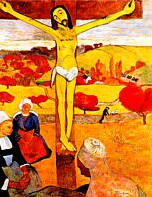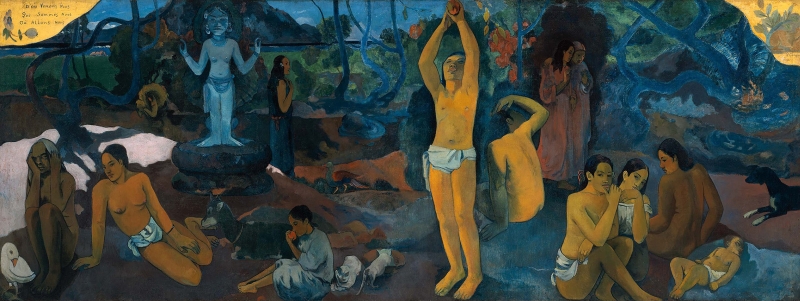  Paul Gaugin was a French painter whose lush colour, flat images, and idyllic subject matter helped form the basis of modern art.
Paul Gaugin was a French painter whose lush colour, flat images, and idyllic subject matter helped form the basis of modern art.
Gauguin was born in Paris, France in 1848, into a middle-class family. In his early life, he lived with them in Peru for four years, from 1851 to 1855, and later sailed with the French merchant marine from 1865 to 1871. When he returned to France he became a successful stockbroker, again settling into comfortable middle class life with a wife and five children. In 1874 he met the impressionist artist Camille Pissarro, and shortly afterward became a collector and amateur painter. He began to show his work, and in 1885 began to paint full-time, abandoning his wife, family, and job. His early style was impressionist, a realistic style favoured particularly by French painters in the late 1800's, that used dabs and strokes of umixed primary paint colours to simulate reflected light.  From 1886 to 1891 Gauguin lived mainly in a region of rural France known as Brittany. Under the influence of the painter Émile Bernard, Gauguin gave up impressionism and began painting in a less natural style, which he called synthetism. He traveled to Panama and the island of Martinique in 1887 in search of more exotic subjects to paint. Eventually, he found inspiration in primitive cultures, and influenced by Vincent Van Gogh and the flat style of Japanese painting which was popular at the time, he began to paint in a style characterized by large areas of bold colour, colour that was unnatural, but which he found appealing. His picture 'Yellow Christ', shown at the right, illustrates this technique. In 1891, Gauguin left France for the South Seas, first Tahiti and later the Marquesas Islands. He continued to paint; increasingly his compositions became simpler, with bold, unrealistic colours and without perspective. The subjects for his paintings became the people and landscapes of these tropical islands. He spent the last five years of his life in poverty and in bad health as the result of a venereal disease; in 1897 he tried to commit suicide. But he continued to paint; his masterpiece is considered to be his mural "Where Do We Come From? What Are We? Where Are We Going?", which he painted shortly before his failed suicide attempt. See the painting directly below. He died in 1903 on the Marquesas Islands. 
|